Apple on Tuesday was granted a patent for a method by which two or more mobile device users can share and interact with app data in real time, including the ability to see each other's screens during a FaceTime call.
As assigned by the U.S. Patent and Trademark Office, Apple's U.S. Patent No. 8,965,349 for "Interactive application sharing" includes provisions that allow multiple users to share and collaborate on projects in-app, much like Google's Web-based productivity services. Apple's invention adds in videoconferencing capabilities, however, making it a more personal collaboration tool.
Apple points out that existing mobile devices, like the iPhone and iPad, facilitate data sharing, but current solutions face a number of user experience obstacles. The document offers an example of sample drafts that might be emailed from one worker to another rather than shared in a single app. This disconnect costs time and in some cases money.
To bring back the human element, Apple imagines a system that allows users to share document data in a common app in real time, in some cases with screen and media sharing, or even live video. Screen sharing has become an everyday tool for many desktop computer users, but the technology has yet to make the jump to mobile.
As described in Apple's invention, a first user initiates a collaborative session with at least one other device, which in turn accepts to establish a wireless connection. The initiating device may host the session, providing screen and data updates to the second device over a suitable means of wireless communication.
The system allows for interactive application sharing, which transfers specific app data back and forth across an established wireless bridge. A standard user interface is not described, but the patent mentions app data can be overlaid on top of a FaceTime image, or vice versa. In some cases, the video feed can serve as a background for the iOS SpringBoard prior to selecting a common app for sharing.
While not described in the document text, one illustration shows what appears to be a mother reading "Winnie the Pooh" to their child from what is assumed to be a remote location. The scene is reminiscent of Apple's first FaceTime TV commercials that touted the ability to remotely connect to family from afar.
In some embodiments, users can elect to share data only when another type of communication is occurring between the two devices. For example, a host device can choose to limit data sharing to FaceTime calls, a protocol that already requires a substantial bandwidth cap. The idea is to piggy-back packetized data along with, or as part of, the videoconferencing feed over an established line of communication.
For security, users can set privacy designators to mark data private or public. As seen in the illustration above, a user may designate certain data to be "partially shared." In a calendaring app, for example, a first user can elect to share available times with a second user, while leaving event specifics obscured.
The remainder of Apple's patent discusses details relating to the proposed system's user interface, communications backend and operating workflow, among other minutiae.
It is unknown if Apple intends to bring a version of today's invention to market, but competitors like Google are already fielding similar real-time collaboration technology.
Apple's FaceTime collaboration patent was first filed for in January 2012 and credits Brandon Joseph Kieft and Catherine Rose Grevet as its inventors.
 Mikey Campbell
Mikey Campbell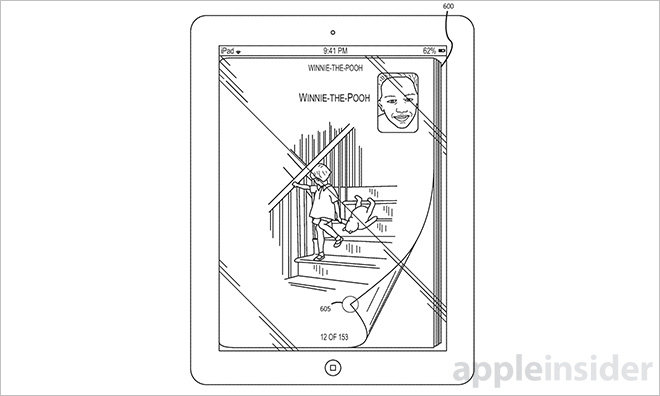
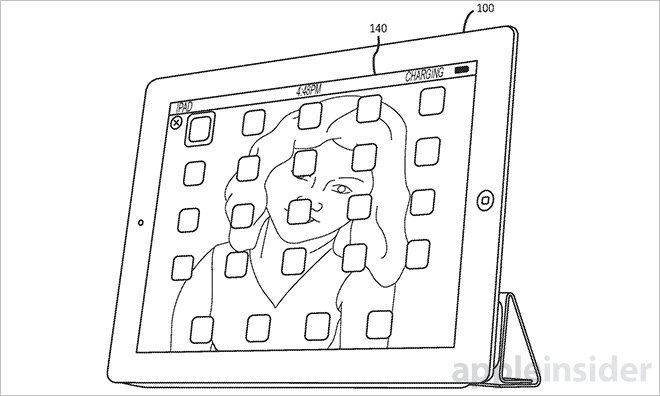
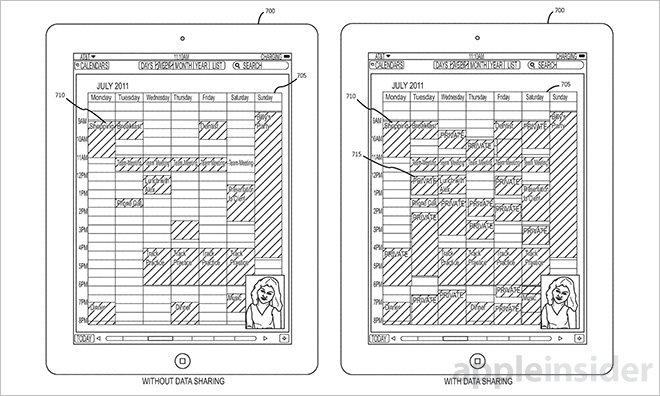







-m.jpg)






 Chip Loder
Chip Loder
 Wesley Hilliard
Wesley Hilliard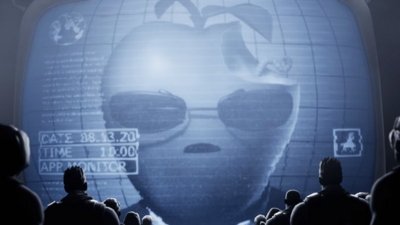
 Marko Zivkovic
Marko Zivkovic

 Christine McKee
Christine McKee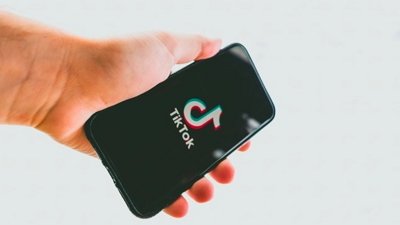
 Amber Neely
Amber Neely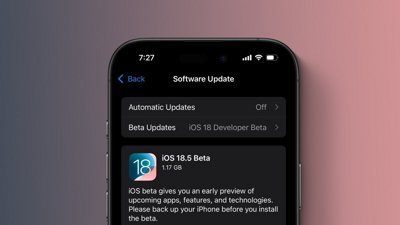

 Malcolm Owen
Malcolm Owen








11 Comments
A telePooh patent? Sweet!
Boy, this would be perfect for homeschoolers and there are many business use cases that could be imagined... Heck, even gaming possibilities.
Great feature. Now, please add Conference FaceTime. That's a killing feature for enterprise. Forget about Net Meeting crap, probably WebEx too.
[quote name="fallenjt" url="/t/184920/apple-patent-outlines-mobile-app-data-sharing-and-collaboration-over-facetime#post_2680453"]Great feature. Now, please add Conference FaceTime. That's a killing feature for enterprise. Forget about Net Meeting crap, probably WebEx too.[/quote] Yes, and tie the spatial audio panning to the position onscreen of the participants.
When the hell are they going to bring multi-party video chat back???? IChat was actually a much better app than FaceTime. I used it all the time in my business.